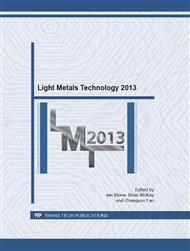p.761
p.766
p.771
p.776
p.783
p.788
p.793
p.798
p.803
Effect of Aging on Conductivity of Heat Resistant Overhead Line Conductors
Abstract:
Different kinds of Al and Al alloys are used for all bare overhead energy transmission lines. In the present work, the effect of heat treatments on the conductivity of Al-0.25wt.%Zr alloy has been investigated. Al-0.25wt.%Zr samples were prepared in cold graphite crucibles by using a vacuum furnace and a continuous casting line. The samples were aged isothermally and isochronally in muffle and tube furnaces. Aging was carried out at a wide range of temperatures (350-600 °C) at constant aging times (75 h, 100 h) and a wide range of aging times (25-500 h) at constant temperatures (425 °C, 450 °C). According to the experimental results, conductivities of aged samples increase up to a certain aging temperature and aging time and reach peak values, then decrease with increasing aging temperature and aging time.
Info:
Periodical:
Pages:
783-787
Citation:
Online since:
July 2013
Authors:
Keywords:
Price:
Сopyright:
© 2013 Trans Tech Publications Ltd. All Rights Reserved
Share:
Citation:


